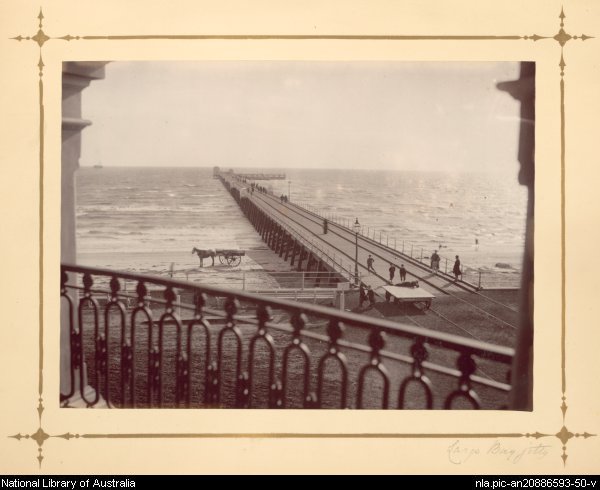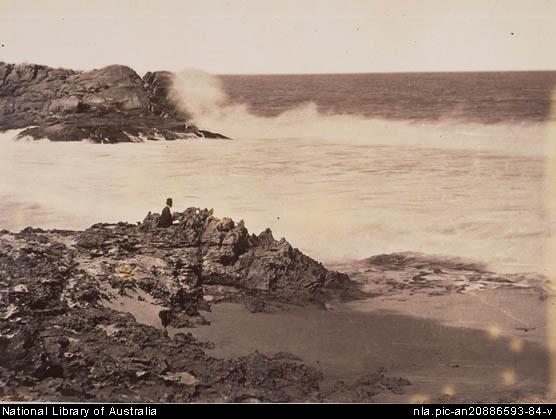|
April 23, 2012
Captain Sweet arrived in Adelaide to set up his photographic practice in 1866 and he spent the next twenty years photographing the most important period of South Australia’s development. He photographed the growth of the city from its infancy to economic, cultural and industrial maturity; witnessing the construction of some of Adelaide’s most important buildings and the establishment of its first major transport and communication systems. He remained the foremost landscape photographer in South Australia until his death in 1886.
 Samuel White Sweet, Largs Bay Jetty, between 1869--1889, albumen silver, NLA
Samuel White Sweet, Largs Bay Jetty, between 1869--1889, albumen silver, NLA
Captain Sweet worked with wet plate negatives and albumen silver paper for most of his career. In 1880 he introduced dry plate negatives to South Australia. Dry plates were glass plates coated with a gelatin emulsion of silver salts. They did away with all the messy chemicals of wet plate negatives, were far easier to use and much more sensitive, requiring shorter exposure times. Glass plates continued to be used into the early twentieth century, when nitrocellulose roll film became generally available.
 Samuel White Sweet, Port Elliot,] between 1869 and 1889, gelatin silver, NLA
Samuel White Sweet, Port Elliot,] between 1869 and 1889, gelatin silver, NLA
This style of photography was prior to Pictorialism which as the first 'art movement' in photography in Australia and internationally.
|
